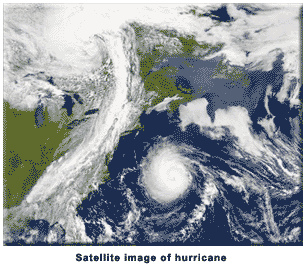Historically, notorious hurricanes were named after a saint's day. Hurricane San Felipe struck Puerto Rico on September 13 in 1876, and struck again — on that day — in 1928.
Another approach was attempted around the turn of the 20th century by an English-born meteorologist living in Australia, Clement Wragge, who sometimes assigned to storms women's names, or perhaps an irksome politician. Wragge's colleagues often referred to him as "Inclement Wragge."
In 1941, author George Rippey Stewart began the practice, now taken for granted, of naming various storms, in his novel, Storm.
 Since 1953, developing storms in the Atlantic have been given short names by the National Hurricane Center, which is near Miami, to replace the unwieldy longitude-latitude method of tracking storms. The NHC developed a chart of names, in alphabetical order, that would cover a six-year period before repeating itself. Names are now alternated with male and female names from the English, Spanish, and French languages.
One proviso: Names beginning with Q, U, X, Y, and Z in the western hemisphere are not included on the list because of a paucity of names starting with those letters.
Prior to 1978, only female names were used. In that year, weather officials began to alternate male with female when naming storms in the eastern North Pacific. The following year, naming storms in the Atlantic and Gulf of Mexico followed suit.
Retirement
Should a storm be deemed destructive enough in the number of lives it claimed, or havoc it wreaked, that name is retired for a minimum of 10 years for data collection, insurance claims — and personal sensitivity. The name is replaced with another beginning with the same letter and gender.
Regionwide naming systems
The Atlantic is not unique in the manner its storms are named. Regions from around the globe bear their distinctive, cultural stamp on area storms, and are approved by the World Meteorological Organization. Other regions include:
Since 1953, developing storms in the Atlantic have been given short names by the National Hurricane Center, which is near Miami, to replace the unwieldy longitude-latitude method of tracking storms. The NHC developed a chart of names, in alphabetical order, that would cover a six-year period before repeating itself. Names are now alternated with male and female names from the English, Spanish, and French languages.
One proviso: Names beginning with Q, U, X, Y, and Z in the western hemisphere are not included on the list because of a paucity of names starting with those letters.
Prior to 1978, only female names were used. In that year, weather officials began to alternate male with female when naming storms in the eastern North Pacific. The following year, naming storms in the Atlantic and Gulf of Mexico followed suit.
Retirement
Should a storm be deemed destructive enough in the number of lives it claimed, or havoc it wreaked, that name is retired for a minimum of 10 years for data collection, insurance claims — and personal sensitivity. The name is replaced with another beginning with the same letter and gender.
Regionwide naming systems
The Atlantic is not unique in the manner its storms are named. Regions from around the globe bear their distinctive, cultural stamp on area storms, and are approved by the World Meteorological Organization. Other regions include: